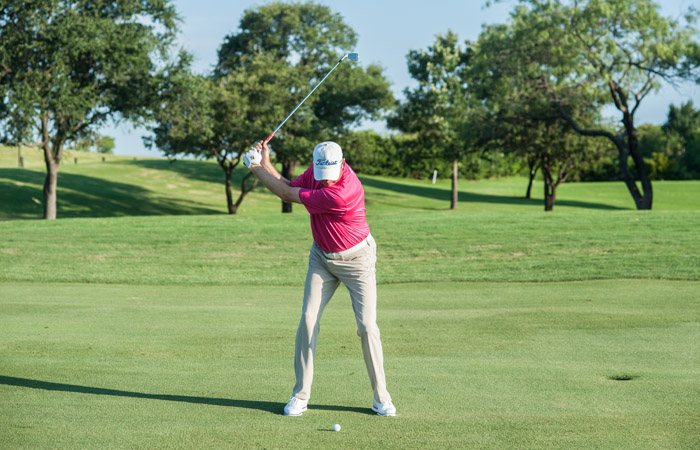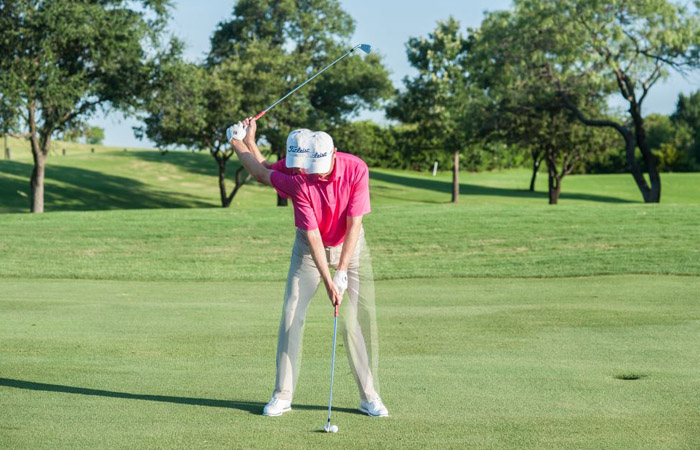Instruction — Pivoting the Backswing
Every motion in the golf swing has theory behind it, but how that theory is translated sometimes differs based on flexibility. No motion stands out to me more in this scenario than the backswing pivot. In theory, the backswing pivot should have the lower body resisting as the upper body turns against the lower body to create coil. Weight shifts to the right side, but there’s minimal lateral motion due to the shoulders turning 90 degrees or more. This sounds great, but often not able to be achieved by most recreational golfers.

As golfers get older, they tend to lose their range of motion or flexibility in their hips and back. As a result, resisting and coiling in the backswing become very difficult, if not impossible. Golfers struggle to get turned back and behind the ball. They’re in need of some motion to help them. What used to work in turning behind the ball as the lower body resisted has now turned into a reverse pivot due to lack of turn in the backswing.
Ideally, golfers should try to maintain flexibility with age, but there are a few other things that can be done to help with the pivot in the backswing:
- Toe the right foot out – This adjustment at set up allows weight to shift more in to the right glute, leg and foot as the swing approaches the top of the backswing. The more square the right foot is, the more resistance it creates. Flaring it out some frees up some movement.
- Allow the right hip and shoulder to turn – In theory, the right side should resist as the left side turns in the backswing. This becomes very difficult when you lose your flexibility. To get more behind the golf ball in the backswing, let the right shoulder turn back as the club swings back.
- Shift your head to the right – The old adage of the head staying perfectly still is blown way out of proportion. If you struggle to get behind the ball in the backswing, allow your head to shift to the right as you swing back. This motion will move more weight to your right side to get loaded up at the top of the backswing.

All three of these movements can be incorporated in order to improve your backswing pivot. Whether you coil or need some assistance, the goal is to get behind the ball in the backswing. Allow these three movements to help keep your shots, solid, long and high.
Tim Cusick is the Director of Instruction at the Four Seasons Resort and Club/Dallas at Las Colinas. The Northern Texas PGA named Cusick Teacher of the Year in 2005, 2009 and 2015, as well as the 2014 Horton Smith Award winner for education. He’s the author of ‘The Four Keys to Improve your Swing.’ Follow him on Twitter @timcusickgolf and visit his website: timcusickgolf.com.



